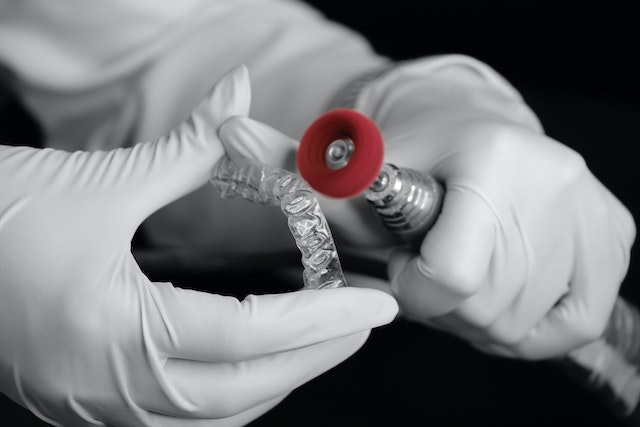Invisalign vs. Braces: Weighing the Pros and Cons

People who want to straighten their teeth may choose from several different methods. It’s a toss-up between Invisalign and traditional metal braces, and Invisalign is a newer technology than traditional braces, which have been used for many years. Here you will look at the similarities and differences between Invisalign and braces to help you decide which option is best for you.
Braces: Pros and Cons
Braces are often used to align teeth, affixed to the teeth using dental cement and constructed of metal brackets and wires. Here, the pros and cons of getting braces are spelled out in detail.
Pros
- Braces successfully straighten teeth and fix improper bites. They may be used to treat various dental disorders, including overbites, underbites, and crossbites.
- Standard metal braces often cost less than Invisalign. Depending on the individual patient’s needs, traditional braces may be more cost-effective than Invisalign.
- Braces can take a beating and keep on ticking for a long time. They also outlast Invisalign in terms of wear time.
Cons
- Braces and wires on one’s teeth are easy to see and may make some people feel uncomfortable about themselves. Good dental hygiene may be challenging with metal braces and wires.
- Requiring regular visits to the orthodontist for tightening and loosening of braces might be a nuisance.
- The first few days after getting braces affixed to the teeth might be the most uncomfortable. Adjustments might cause discomfort for some people.
Invisalign: Pros and Cons
Despite being a relatively recent innovation, Invisalign has quickly become a dental industry standard. Using a set of custom-made, removable, and almost invisible plastic aligners, the teeth shift into place over time. What follows is a discussion of the benefits and drawbacks of Invisalign.
Pros
- Aligners like Invisalign are almost undetectable, making them a good choice for those who are self-conscious about their looks. They’re created to order from transparent, BPA-free plastic and molded to the shape of each person’s teeth.
- With Invisalign, you can take the aligners out whenever you want to brush or floss, making it a breeze to keep your teeth clean. People may go about regular dental hygiene routines, including brushing and flossing.
- With their soft and flexible plastic construction, Invisalign aligners are more pleasant to wear than metal braces. It’s possible neither the cabling nor the clips will bother the patient’s mouth.
Cons
- It’s possible that Invisalign won’t work as well as braces for fixing severe tooth issues. It’s effective for those with mild tooth problems.
- You should wear your Invisalign aligners 24 hours a day, seven days a week, for the best results. Non-compliant users risk not seeing the intended effects of the aligners.
- When additional aligners are needed, the cost of Invisalign treatment might exceed that of traditional braces.
What Works Better, Braces or Invisalign?
Regarding correcting misaligned teeth, the topic of Invisalign vs. braces persists. Let’s dive into it.
Effectiveness
Straightening teeth may be accomplished with either Invisalign or braces, although braces are often more successful in dealing with more complicated dental issues.
Appearance and Ease
While braces are noticeable to everyone around you, Invisalign is almost undetectable. Since Invisalign doesn’t use wires or brackets, it’s less likely to cause mouth sores than traditional braces.
Cost
Although the price of braces and Invisalign might vary widely from patient to patient, braces are often more cost-effective. If you’re looking for Invisalign in Chicago, finding a reputable dental professional with experience in teeth alignment treatment is essential. Remember: You get what you pay for, and the end result will be worth the cost.
The decision between Invisalign and braces should be made individually, considering the patient’s unique circumstances and aesthetic goals. The best way to figure out what dental procedure is ideal for you is to talk to a dentist. Remember: You get what you pay for, and the end result will be worth the cost.
Conclusion
It’s essential to consider the benefits and drawbacks of each before making a final selection. Although braces are more cost-effective and efficient in treating complicated dental issues, they may cause discomfort and embarrassment for certain people due to their unmistakable appearance and physical presence. Invisalign aligners are an excellent alternative for those who are self-conscious about their looks since they are almost invisible, comfortable, and removable.


